2016 BMW X1 Review - The Un-BMW

When is a BMW not a BMW? Some would say: when it has four wheels. Others will say: when it’s front wheel drive. But here we are. BMW’s smallest crossover has ditched its BMW 3-Series roots for underpinnings shared with the Mini Countryman.
Say what?
Americans may be surprised to hear that the X1 is not BMW’s first front driver. Neither is it the last BMW with a transverse engine. Our European friends will soon be seeing the 2 Series Gran Tourer — a small 7-seat … minivan. Yes, a BMW minivan. What’s that sound, you ask? Minds blowing.
For purists, the notion of a trio of transverse-engined BMWs prowling around the countryside is an abomination; an affront to everything E46 M3 owners holds sacred.
For the rest of you? It’s no big deal. Seriously.
Exterior
For 2016, the X1 has a more traditional crossover look with a taller profile and boxier dimensions, though it bucks the bigger-is-better ethos and loses a hair of length.
The classic, rear-wheel-drive proportions of the old X1 have been replaced with a much longer front overhang, a slightly larger rear overhang and shorter overall dimensions. While a close friend and BMW purist immediately noticed “something wrong” with the X1’s front end, the casual observer is unlikely to think it’s anything other than a 9/10ths-scale X3. That’s what BMW is betting on.
Interior
Although the 2016 X1 isn’t as long as the outgoing model, you’ll actually find more room on the inside thanks to its space efficient, front-wheel-drive roots. BMW was able to further push the bounds of packaging effectiveness with the X1 as it no longer need to house a longitudinally mounted 3-liter inline-six under the hood. In addition to an improved seating position, you will find more headroom, legroom and cargo room in its cabin than before.
Although BMW has taken pains to share as little as possible with its Mini brand, a few shared design areas shine through. The front seat bottom cushions are shorter than what you’ll typically find in a BMW and the seats lack the range of adjustability you’ll encounter in the Audi Q3 or larger BMW X3 crossover. The center console is lower to the ground than other BMWs, a design allowed by the transverse engine layout. Also, the X1 uses a Mini-esque traditional shifter instead of the BMW partsbin joystick.
Drivetrain
The only engine on offer is a new 2-liter turbo that makes a little less oomph than the 2015 engine. Power drops to 228 horsepower and torque remains essentially the same at 258 lbs-ft. The engine is still mated to an eight-speed transmission, but this time it’s a transverse unit from Aisin and not a longitudinal unit from ZF. The same basic transmission is found in Volvo’s new four-cylinder vehicles, the Lexus RX350 and even some versions of the Chevy Malibu.
The major difference between this car’s all-wheel-drive system and that of its predecessor should be obvious: this one is programmed to send 100 percent of the power to the front wheels as often as possible for increased efficiency. Unless there’s wheel slip, the X1 won’t ever send more than 50 percent of the power to the rear wheels, a very different dynamic than the previous X1. Despite the drivetrain change, fuel economy remains the same as before at 26 mpg combined.
Drive
Let’s back up and talk about the X1 as if its predecessor had never existed.
The Aisin eight-speed automatic was a solid choice for BMW. First gear is low enough to give the X1 a 2.7-second 0-30 mph time and shifts are quick enough to allow the front-wheel-drive crossover a 6.8 second sprint to 60 mph. That’s the same 0-60 mph time we clocked in the GLA 250, only the X1’s transmission won’t drive you to tears in stop-and-go traffic like Mercedes’ herky-jerky DCT. (It is, however, about 0.5 seconds slower than BMW quotes on its website.) Audi’s Q3 also uses an Aisin unit, but it’s 2 cogs behind the X1. The older six-speed automatic and notably less powerful engine make the Q3 feel like a slug in comparison.
BMW shoes all X1 models with 225 width run-flat tires in an effort to save weight. Opt for the M-Sport trim and the tires don’t get any wider, but you can check the options box for summer rubber instead. Any way you slice it, the tires seem narrow when you visit the Audi dealer and notice most Q3 models wear 255/40R19 rubber. The tire choice means that the X1 falls toward the back of the pack when it comes to handling ability and stopping distance unless you’re comparing absolutely base trims where the BMW beats the Audi but falls behind the Merc.
I was concerned when I heard that BMW and Mini would be sharing platforms. Not because I was worried BMW would start putting their orange tachometer in the center of the dash, but because I’ve never cared for the ride in modern Minis. The Mini crossover’s suspension is too firm and easily becomes unsettled on broken pavement, but that didn’t happen with the X1. Instead, the ride is more composed and softer than the GLA, but not as soft as the Lincoln MKC.
Starting at $34,800, it may seem like the X1 is at a price disadvantage compared to the less expensive GLA 250 and Q3. Start looking at the features list, however, and the X1 is actually one of the better values. It’s less expensive than a comparable GLA, especially if you start adding options to the Mercedes. It’s a hair more expensive than the Q3, feature-for-feature, but it’s also about a second faster to 60 mph. BMW has made options available in the X1 that you just don’t find in the Q3 or GLA, such as a heads-up display and the same infotainment system seen on higher-end models. The result is just as you’d expect: a less expensive BMW that happens to be front-wheel drive.
If we circle back to the old X1, we can immediately see the problem. The old X1 was an inexpensive time machine going back to an E93 wagon but protected by a new car warranty. The current X1 is a compact suburban people mover with a trunk that can swallow a BBQ.
The X1 is the perfect example of an automotive enigma. It’s better in almost every metric than its predecessor, yet it’s less satisfying. The X1 is the baked potato chip of the compact crossover world. In truth, all the compact crossovers out there are healthy snacks, but the former X1 was the deep-fried, extra greasy, super salty chip that everyone secretly wanted. After all the scores were tallied, the X1 beats the GLA, which is too small to be practical and too unrefined to be a Mercedes, but falls behind the Q3, which is simply more fun on a winding mountain road.
The new X1 isn’t the guilty pleasure it once was. And that’s a pity.
BMW provided the vehicle for this review.
Specifications as tested:
0-30 mph: 2.7 seconds
0-60 mph: 6.8 seconds
1/4 mile: 14.9 seconds @ 94 mph

More by Alex L. Dykes
Latest Car Reviews
Read moreLatest Product Reviews
Read moreRecent Comments
- Theflyersfan Nissan could have the best auto lineup of any carmaker (they don't), but until they improve one major issue, the best cars out there won't matter. That is the dealership experience. Year after year in multiple customer service surveys from groups like JD Power and CR, Nissan frequency scrapes the bottom. Personally, I really like the never seen new Z, but after having several truly awful Nissan dealer experiences, my shadow will never darken a Nissan showroom. I'm painting with broad strokes here, but maybe it is so ingrained in their culture to try to take advantage of people who might not be savvy enough in the buying experience that they by default treat everyone like idiots and saps. All of this has to be frustrating to Nissan HQ as they are improving their lineup but their dealers drag them down.
- SPPPP I am actually a pretty big Alfa fan ... and that is why I hate this car.
- SCE to AUX They're spending billions on this venture, so I hope so.Investing during a lull in the EV market seems like a smart move - "buy low, sell high" and all that.Key for Honda will be achieving high efficiency in its EVs, something not everybody can do.
- ChristianWimmer It might be overpriced for most, but probably not for the affluent city-dwellers who these are targeted at - we have tons of them in Munich where I live so I “get it”. I just think these look so terribly cheap and weird from a design POV.
- NotMyCircusNotMyMonkeys so many people here fellating musks fat sack, or hodling the baggies for TSLA. which are you?



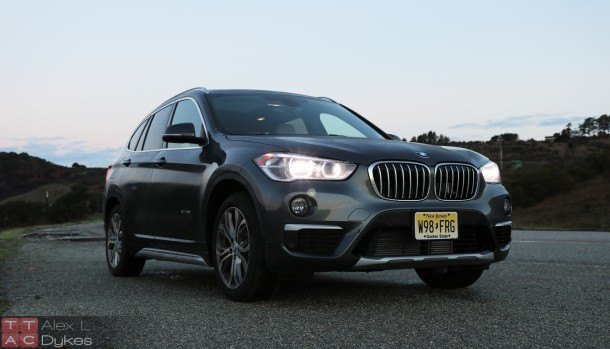










































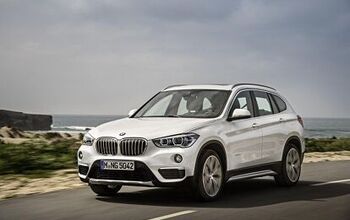

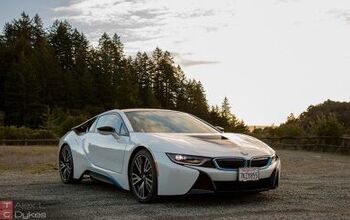
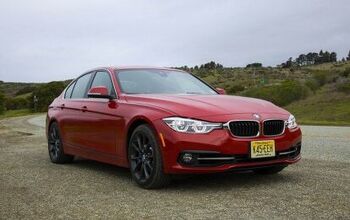
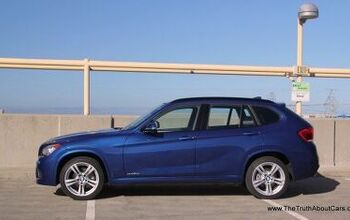










Comments
Join the conversation
Good review. Liked it more than the review in Bimmer magazine. I think they underplayed how much fun is lost going from an E90 wagon base to a Mini. But no doubt the new one will sell better.
as a 2016 X1 owner, some of my observations: Highs: Good amount of interior space for a small SUV Great gas mileage Fun to drive Very good cargo space Standard Automatic tailgate Standard dual zone climate Connected drive apps are decent (Spotify and Pandora integration is better than CarPlay) 4yr/50k maintenance (down to 3yr/36k in '17 MY) Price $34,800 Financing 0.9% up to 72 mos. Lows: Radio is satellite ready, but they force you into a very expensive package to have it active. I opted to buy the FSC code and activate it for around $250. No standard back-up camera? Heck, even the Nissan Versa base has one. Base seats are lilliputian in size. For the vast majority of Murican lard-asses, this will be a big problem. I don't mind them other than the rounded base looks out of place The shift lever in my opinion sticks up too high. No standard auto-dimming rear view mirror? Voice control button on wheel, but only works with enhanced Bluetooth (once again you can program this on and save a ton) standard 6.5" screen looks anemic compared to the optional 8.8". Air conditioning airflow is very weak. Must close rear seat vents to increase air flow. One nice thing is ConnectedDrive app allows you to remotely ventilate the cabin.